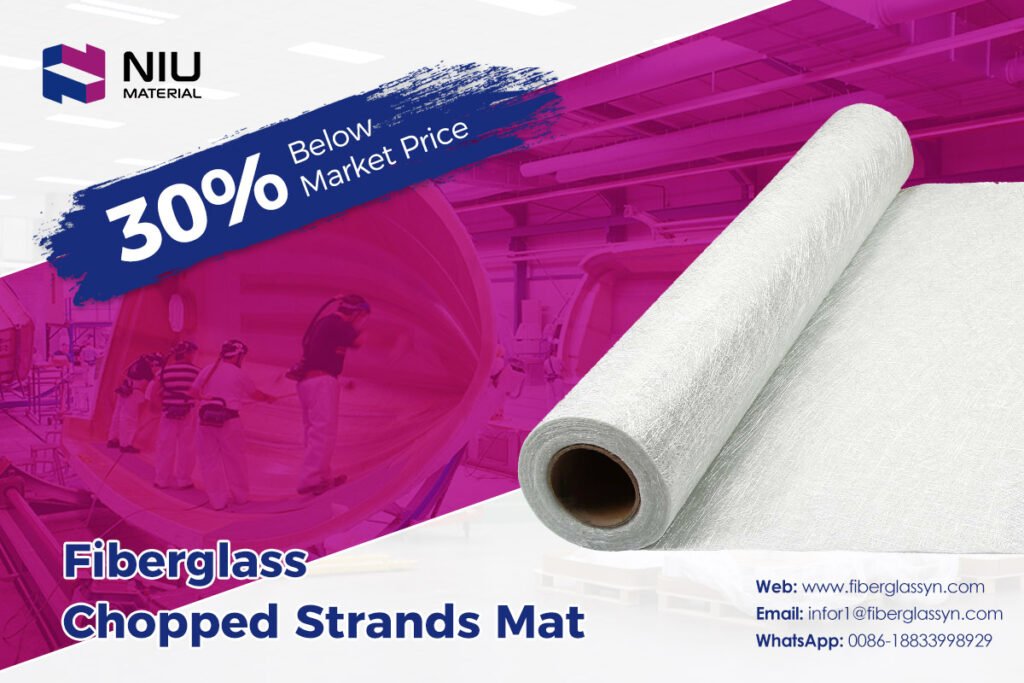- infor1@fiberglassyn.com
- +86-13933702587

The aerospace field has always been an important area for the development of human science and technology. Its significance is not only to satisfy human exploration and understanding of the universe, but also to promote the development of science and technology, economy and culture. As humans continue to explore the universe and the vision of future space colonization gradually becomes clearer, the development of aerospace technology has increasingly become the focus of global attention.
Among many key areas of aerospace technology, the development of materials science is crucial to the performance and functionality of spacecraft, and high-performance glass fiber, as an important material, plays an important role in the research, development and application of the aerospace field. High-performance glass fiber is a fiber material made of glass as the main component and processed through a special process. It has excellent mechanical properties, high temperature resistance and corrosion resistance, and has broad application prospects in the aerospace field.
Glass fiber roving is mainly achieved through glass melting and drawing processes. Fiberglass roving has excellent tensile strength and modulus, good flexibility and corrosion resistance. Its surface is smooth and the fibers are evenly distributed, making it suitable for a variety of composite material preparation processes.
In the aerospace field, fiberglass roving is often used to prepare composite structural parts to improve the structural strength and durability of spacecraft.
Fiberglass Woven Roving first requires weaving the glass fibers to form a flat mesh structure. The woven fibers are then processed through processes such as resin coating and compaction to give them a certain strength and stability.
Fiberglass Woven Roving has high tensile strength and tear strength, excellent mechanical properties and wear resistance. Its network structure makes the fiber cloth have good guidance and strength distribution, and is suitable for the preparation of complex-shaped structural parts.
In the aerospace field, Woven Roving is often used to prepare the outer shell structure and thermal insulation layer of spacecraft to protect the spacecraft from the impact of the external environment.
The preparation of Fiberglass Mat is mainly achieved through wet spinning process. It has high flexibility and water absorption, and can effectively absorb and disperse impact forces. Its uniform fiber distribution and network structure give it good strength and stability, and is suitable for the preparation of complex-shaped structural parts.
In the aerospace field, Fiberglass Mat is often used to prepare the heat insulation layer and protective cover of spacecraft to protect the spacecraft from the impact of the external environment.
The preparation of carbon fiber mainly uses polypropylene fiber or polypropylene short fiber as raw material, and is processed through carbonization, carbonization, pyrolysis and other processes.
Carbon fiber has extremely high tensile strength and modulus, and has good corrosion resistance and high temperature resistance. Its lightweight and high-strength properties make carbon fiber have broad application prospects in the aerospace field, and is often used to prepare structural parts and thermal insulation layers of spacecraft. Carbon fiber products have excellent mechanical properties and durability and are suitable for long-term work in harsh environments.

As mentioned above, fiberglass roving, Fiberglass Woven Roving, Fiberglass Mat and carbon fiber provide important support for the structural design and functional realization of spacecraft. Through continuous research and development and innovation, these high-performance fiber materials will continue to play an important role in the aerospace field and promote the continuous development and progress of aerospace technology.
The aerospace field has extremely demanding requirements on materials, and high-performance glass fibers play an important role in this field because of their excellent properties.
High-performance glass fiber is used as a structural material and is often used in the design of the outer shell and internal structure of spacecraft. Its high strength and light weight allow the spacecraft to maintain structural stability and integrity while withstanding gravity and aerodynamic pressure.
During the reentry process of a spacecraft into the atmosphere, the high temperature generated by air friction and high-speed motion poses a great challenge to the materials of the spacecraft. High-performance fiberglass are widely used in spacecraft thermal insulation systems because of their high temperature resistance and thermal insulation properties. It can be used to prepare insulation fabrics, insulation boards, etc., to effectively protect the interior of the spacecraft from high temperatures and ensure the safe operation of the spacecraft during re-entry.
In spacecraft, the stable operation of electronic equipment is crucial to the success of space missions. However, spacecraft are often interfered by electromagnetic radiation in the earth’s atmosphere and space, affecting the normal operation of their electronic equipment. High-performance glass fiber has good electromagnetic shielding properties and can be used to prepare shielding covers and isolators for spacecraft, effectively blocking external electromagnetic radiation and protecting the stable operation of internal equipment of the spacecraft.
In addition to the above applications, high-performance glass fibers are also widely used in other aspects of the aerospace field. For example, it can be used to prepare cable insulation layers and thermal conductive materials for spacecraft to ensure the safe operation and heat dissipation of electronic equipment.
In addition, high-performance glass fibers can also be used as airtight materials for spacecraft to prevent gas leakage inside the spacecraft and maintain pressure balance inside the cabin.
In the future, with the continuous expansion of space missions and the continuous improvement of spacecraft performance, high-performance glass fibers will continue to play an important role and provide a solid material foundation for human exploration of the universe.
As one of the important materials in the aerospace field, high-performance glass fiber will face challenges and opportunities in the future development such as the development of new technologies and materials, the prediction of its demand in the aerospace field, and possible application expansion.
With the continuous advancement of science and technology, the emergence of new technologies and new materials will push the research and development and application of high-performance glass fibers to new heights. For example, the development of nanotechnology has provided new ideas for the preparation of high-performance glass fibers. Through the introduction of nanomaterials, its strength, wear resistance, conductivity and other properties can be further improved.
With the continuous development of aerospace technology and the expansion of aerospace missions, the demand for fiberglass will also increase.
High-performance glass fibers have broad prospects for future development in the aerospace field. Through the continuous development of new technologies and materials, the increasing demand for them in the aerospace field and the expansion of possible applications, high-performance glass fibers will continue to play an important role in promoting the continuous progress and development of aerospace technology.
As one of the important materials in the aerospace field, high-performance glass fiber plays an important role in the structure, heat insulation, and electromagnetic shielding of spacecraft. Through the discussion in this article, we can clearly see the application prospects and importance of high-performance fiberglass in the aerospace field. However, with the continuous development of aerospace technology and the expansion of aerospace missions, the demand for high-performance glass fibers will continue to increase, and it will also face some challenges and opportunities.
The application prospects of high-performance glass fiber are mainly reflected in its important role in spacecraft structure, thermal insulation, electromagnetic shielding, etc. As a lightweight and high-strength material, high-performance glass fiber can effectively reduce the weight of a spacecraft and improve its load capacity; at the same time, its excellent heat resistance and corrosion resistance make it ideal for thermal insulation and electromagnetic shielding of spacecraft. It has important application value. Therefore, high-performance glass fiber has broad application prospects in the aerospace field.
In order to further promote the development of high-performance glass fibers in the aerospace field, Niumaterial will focus on the following directions for future research and development:
In summary, high-performance glass fiber has important application prospects and development potential in the aerospace field. Niumaterial should continue to carry out technological innovation and product optimization to meet the demand for high-performance glass fiber in the aerospace field and make contributions to the development of the aerospace industry. greater contribution.

If you have any questions
Please contact us for free consultation and product quotation
Table of Contents Add a header to begin generating the table of contents Introduce Concrete is the backbone of construction—but its inherent brittleness, vulnerability to
Table of Contents Add a header to begin generating the table of contents Introduce A roof is more than just a top layer of a
You can leave your needs and contact information~and We can provide you with usage suggestions + product suitability analysis + free sample delivery!
Leave us your interest and contact information, and we’ll send you detailed information for your reference!
You can leave the specifications and contact information you need~ Our technicians will immediately organize the exclusive information for you and send it to your email!
You can leave your contact information here, and we will send you detailed specifications and application cases to make your purchase clearer~